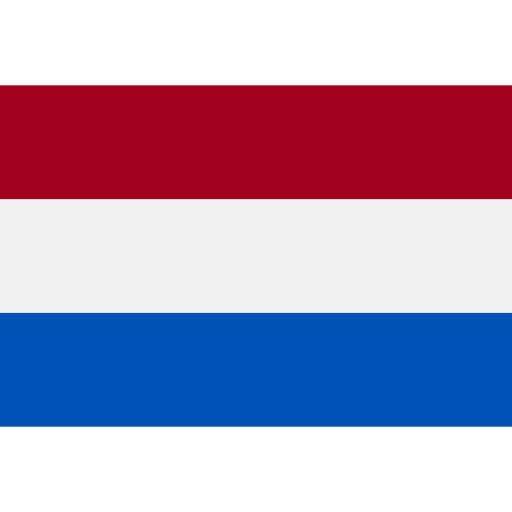Last Updated: 2 December 2025
Why is CoinPoker the Best Online Pot Limit Omaha Site?
CoinPoker started reshaping online poker in 2017. Our player-focused site has brought easy access to Pot Limit Omaha, where you’ll find pros like BenCB and Patrick Leonard. Every player is welcome in our real-money Pot Limit Omaha games up to $1,000/$2,000, which are provably fair, and funds are 100% safe.
Provably Fair Online PLO Games
Every hand of Pot Limit Omaha can be verified as truly random with CoinPoker’s pioneering RNG.
This transparency proves we are a fair online poker site, providing players with evidence that our games are never manipulated.
Once a hand ends, check the shuffle with a simple button tap – a feature only found at our fully legit online Pot Limit Omaha platform.

150% Omaha Bonus & 33% Rakeback
We have two of the best Pot Limit Omaha bonuses that put more money into your account for every real money hand.
Boost your bankroll with a massive 150% first deposit bonus up to $2,000.
For a long-term reward, our 33% Pot Limit Omaha rakeback pays weekly. Get credited every Monday, and you can earn this alongside your first deposit bonus!

CoinPoker is Fully Licensed & Trusted
We have always operated with a legitimate gaming license, underlining our commitment to safe, fair gaming.
Our licensing in Anjouan gives global players the security and peace of mind they deserve when playing Pot Limit Omaha.
Top online professionals and thousands of players trust CoinPoker to provide the safest poker platform, and we deliver.
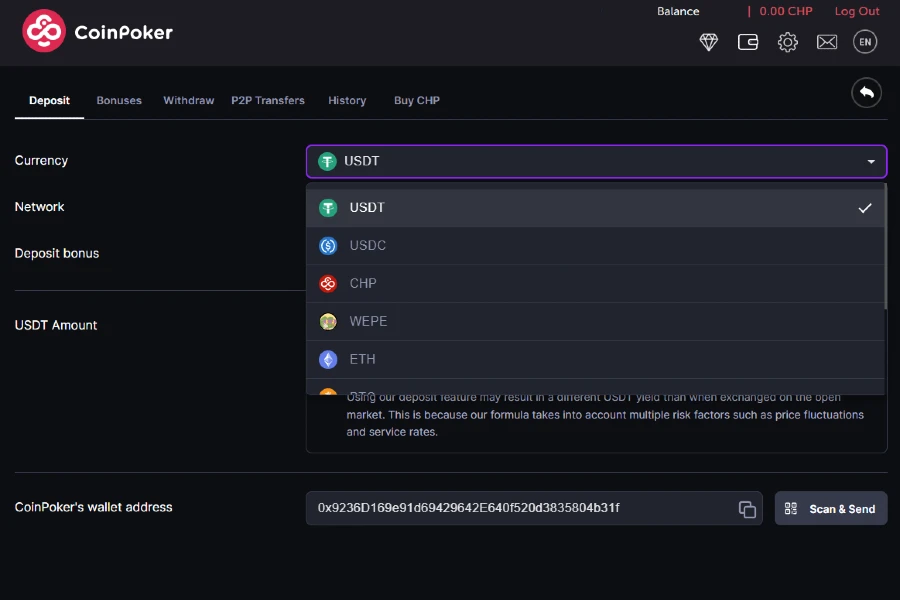
We Accept Crypto & Bank Cards
Our cashier supports multiple transactions for flexible deposit and withdrawal methods.
Players can fund accounts instantly for free with cryptos like Bitcoin, Ethereum, Solana, and more. In many regions, we also accept Google Pay, Apple Pay, and bank cards.
Withdrawals are equally fast and low-cost, so you keep more of what you win.
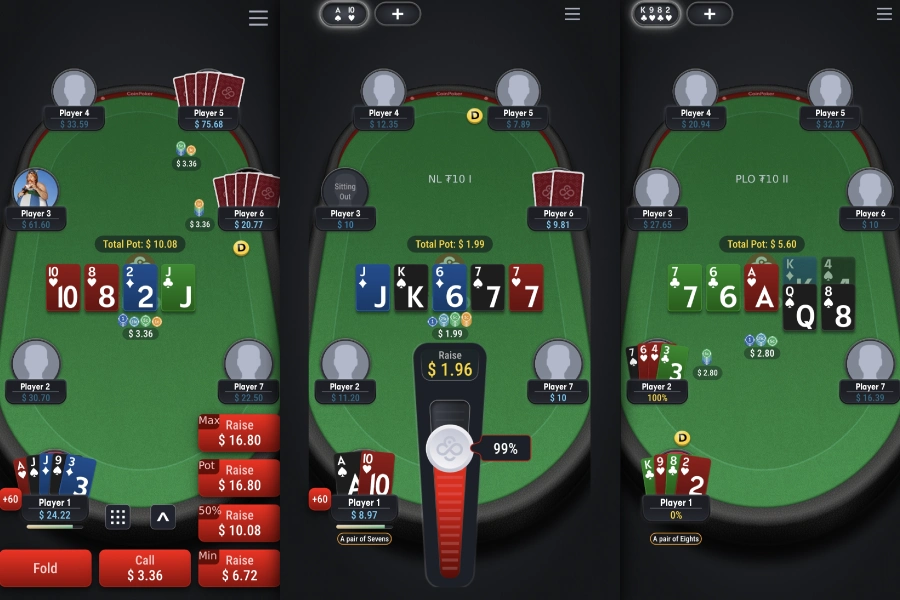
Play PLO on Our Mobile App
The CoinPoker Pot Limit Omaha app brings everything from the desktop game to the palm of your hand without sacrifice.
CoinPoker PLO players also get instant play with our browser platform, which has our newest features, table design, and ultimate convenience on iOS or Android.
What Pot Limit Omaha Games Does CoinPoker Have?
At CoinPoker, we host a vast array of real-money PLO cash games, with micro-stakes and high-roller games running 24/7. We also run a line-up of Omaha tournaments with massive guaranteed prize pools in our major series PLO events.
Learn how to play Pot Limit Omaha before you start, for more fun and better results.
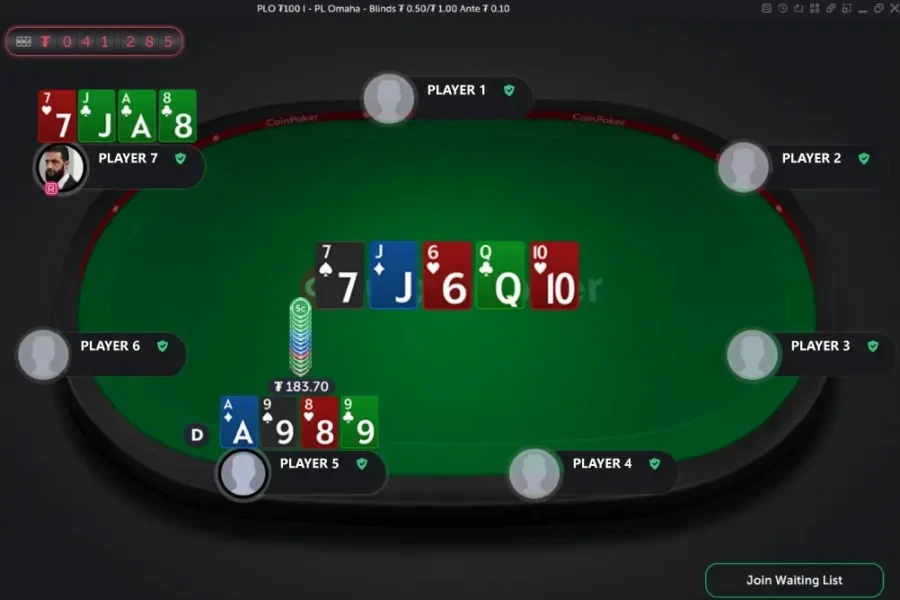
Pot Limit Omaha Cash Games
Play in our Pot Limit Omaha cash games that are ready for you around the clock. Join two, four, or seven-handed tables from $0.01/$0.02 to $1,000/$2,000 at any time, on any device.
Peak player traffic in our Pot Limit Omaha online cash games starts in the early afternoon and ends late evening. The mid-stakes tables have the most players.
We also run the Cash Game World Championship, where players can prove their skills on the world’s biggest stage.
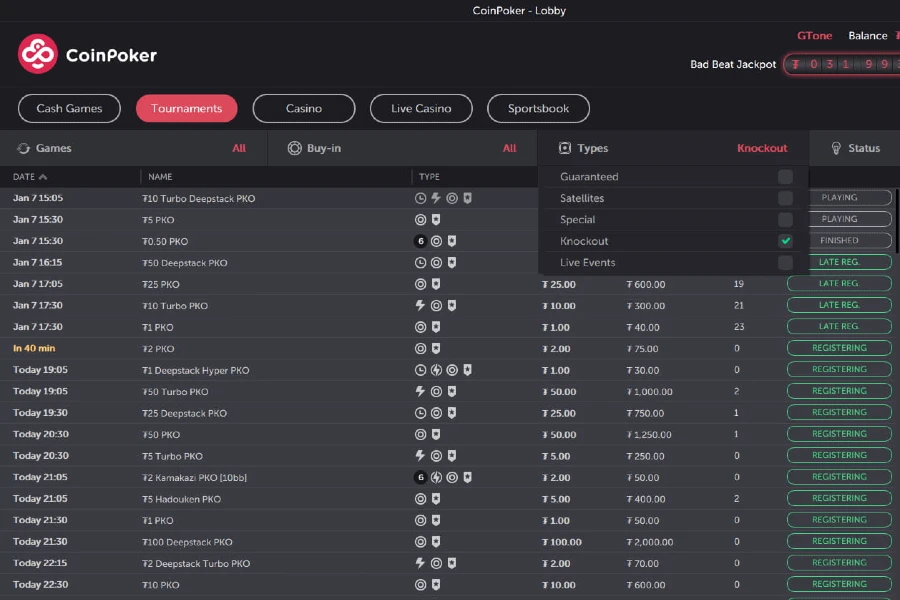
Online Pot Limit Omaha Tournaments
Compete in PLO tournaments online, day or night. Our real-money Omaha tournaments start from $0.50 to the big buy-ins in the Coin Series of Online Poker and Sunday Specials.
The flagship Omaha event at the CSOP is the $2,000 buy-in PLO 6-Max, while $200 and $1,000 events run throughout the series. Meanwhile, the $1k Sunday Eclipse boasts $25k GTD every week. Satellite your way to PLO glory from 1 cent at CoinPoker.
Major Online Pot Limit Omaha Series
The CoinPoker Coin Series of Online Poker made history in 2018 as the first major crypto-only series. Since then, it has paid millions across formats, including PLO, to champions like Rui “RuiNF” Ferreira. The Fall CSOP has over $6 million in guarantees and looks set to be the biggest to date.
PLO cash game players can join the Cash Game World Championship, where big rewards like Rolex watches await elite players.
How to Sign Up on CoinPoker for Pot Limit Omaha
Playing unblocked Pot Limit Omaha poker on CoinPoker is as easy as calling an all-in bet when you have the nuts. We’re VPN-friendly, so wherever you are, just register your account, download the app, and add funds. That’s how to play Pot Limit Omaha poker online hassle-free!
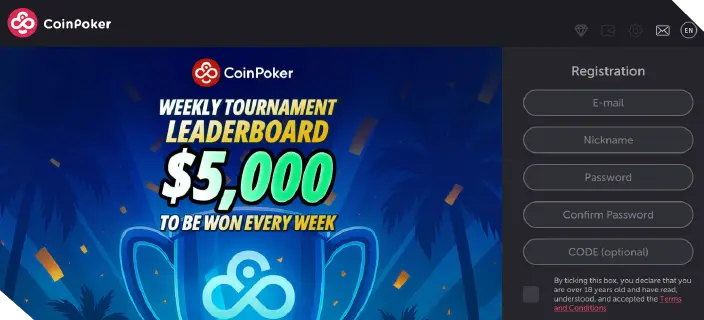
Register & Download CoinPoker
Registering at CoinPoker couldn’t be simpler. We keep things straightforward so you can access games quickly. All you need to do is enter an email address, a nickname, and a password.
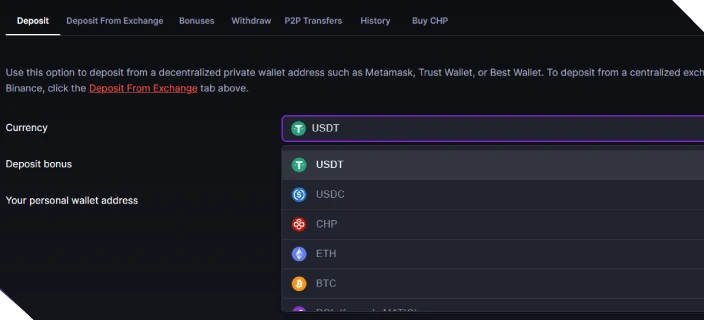
Deposit with Crypto or a Bank Card
Load up your account fee-free and instantly using popular cryptocurrencies like Bitcoin, USDT, or ETH. Prefer card payments, Apple Pay, or Google Pay? We accept those, too. Deposits are fast and secure at our cashier.
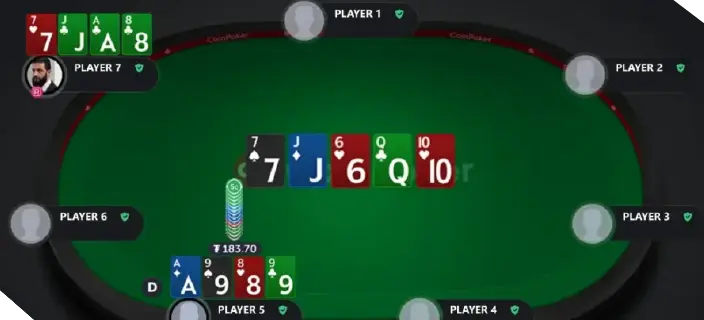
Play Pot Limit Omaha Online
With your account registered and funds added, head to the CoinPoker lobby to choose from real-money Pot Limit Omaha cash games or a jam-packed tournament schedule, and remember to bring your best PLO strategy!
How Does Pot Limit Omaha Compare to Texas Holdem?
Texas Hold’em and Pot Limit Omaha share the same poker DNA, but there are many different aspects to each game. Comparing Hold’em vs. Omaha helps you choose the best format for your skillset and personal preferences.
| Feature | Texas Holdem | Omaha |
|---|---|---|
| Hole Cards | 2 | 4 |
| Community Cards | 5 | 5 |
| Hand Selection | Flexible | Strong starting hands |
| Betting Limit | No betting limits | Usually pot-size betting limit |
| Betting Strategy | Often aggressive, position dependent | More cautious, big hands are needed |
| Game Speed | Faster with simpler decisions | Fast, but more complex with bigger pots |
| Popularity | Widely played and popular | Growing popularity online |
Hold’em favors players who thrive on speed and pressure, while Omaha often requires more thought over drawing hands and outs.
Learn Pot Limit Omaha Strategy and Win More Online
Pot Limit Omaha is a game of big hands and pots that requires smart thinking to win in the long run. Sharpen your PLO strategy or refresh your knowledge with these profitable ways to play Omaha.
Memorize Poker Hand Rankings
Getting familiar with poker hand rankings is essential in PLO. Learn how straights, flushes, and full houses compare, so you can evaluate your holdings. Pay attention to the high-value hands that you’ll often see in PLO.
Master Bankroll Management
Protecting your stack is crucial in poker, but good bankroll management means taking care of your entire roll. Track stakes and losses and scale responsibly while building long-term growth in online Pot Limit Omaha.
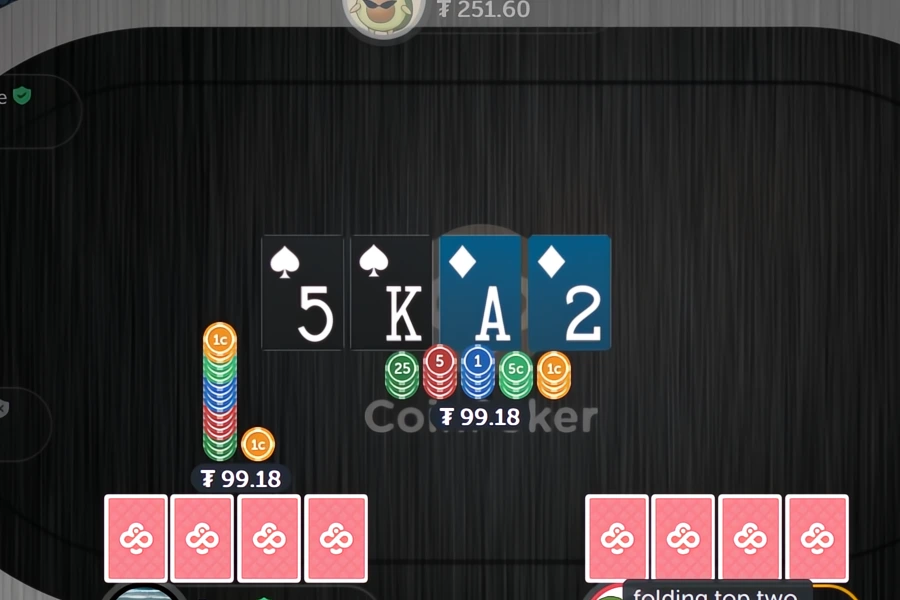
Learn About PLO Bet Sizing
Correct bet sizing in poker is a solid strategy. Know when to bet, raise, or fold, and how to size pots effectively against different opponents to control risk and maximize winnings in Pot Limit Omaha.
Join Our Thriving Gaming Community
CoinPoker offers an unmatched poker experience: instant crypto transactions, provably fair gaming, and no verification requirements.
Join CoinPoker and claim a 150% welcome bonus for poker games.
Play Now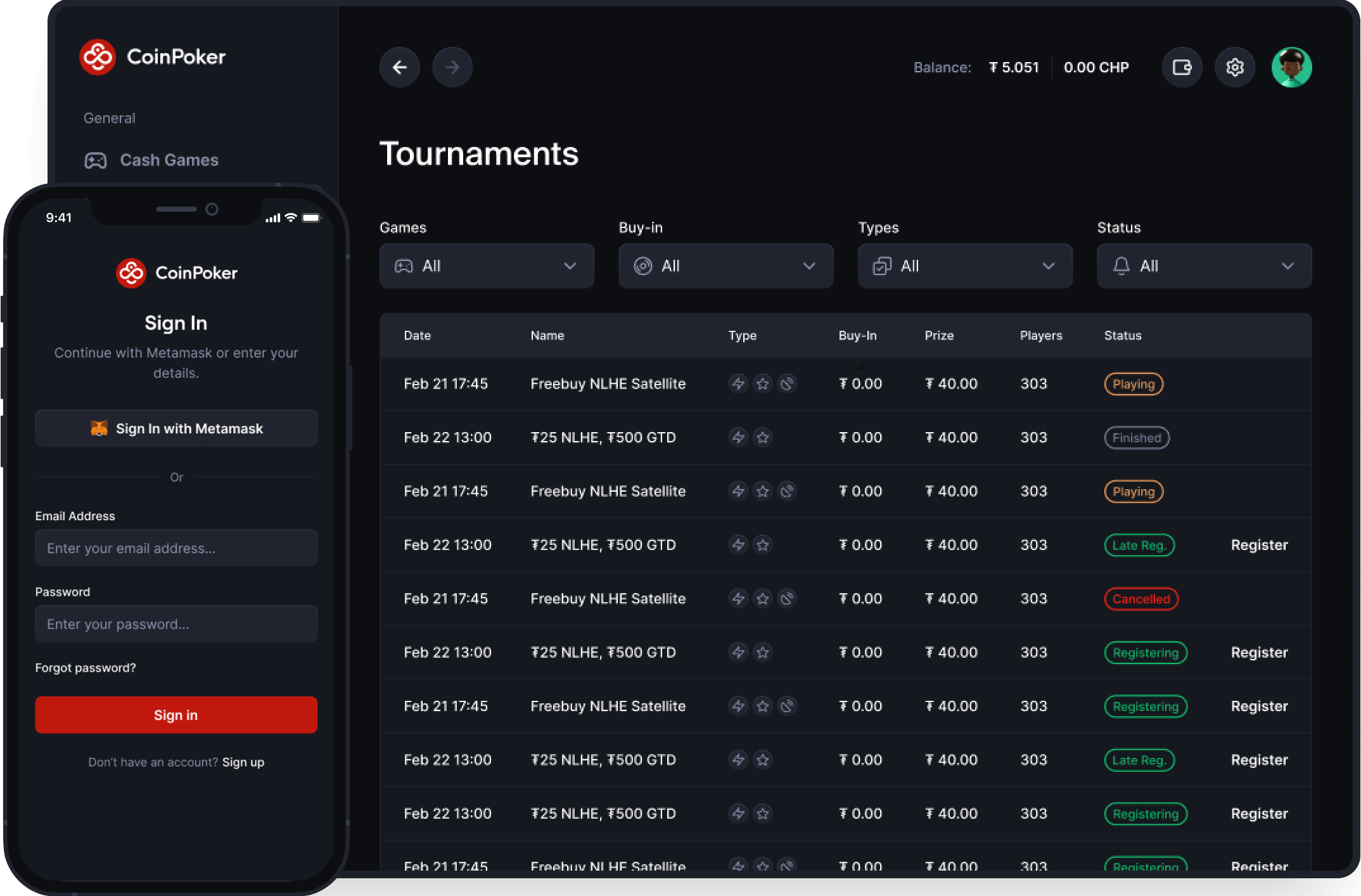

Other Games for Pot Limit Omaha Players to Try
We have an enormous variety of games at CoinPoker. Why not try these other options?
We Support Responsible Gambling
Omaha can be an absorbing and entertaining variant of poker, but responsible gambling must still be taken seriously. That’s why we’ve made it easy for all our players to get support and help if it’s needed. Contact our support team through our app 24 hours a day for advice and to activate tools like timeouts and deposit limits.
For more information on safe gaming, visit these resources:
FAQs
A poker variant where each player receives four hole cards and bets are limited to the pot size.
PLO uses four hole cards, pot-limit betting, and often bigger, more complex pots than Holdem.
CoinPoker offers safe, fair real-money Pot Limit Omaha games and tournaments.
Register, deposit, and the 150% first deposit bonus plus 33% rakeback are applied automatically.
Every hand can be verified using CoinPoker’s RNG feature to ensure fairness.




